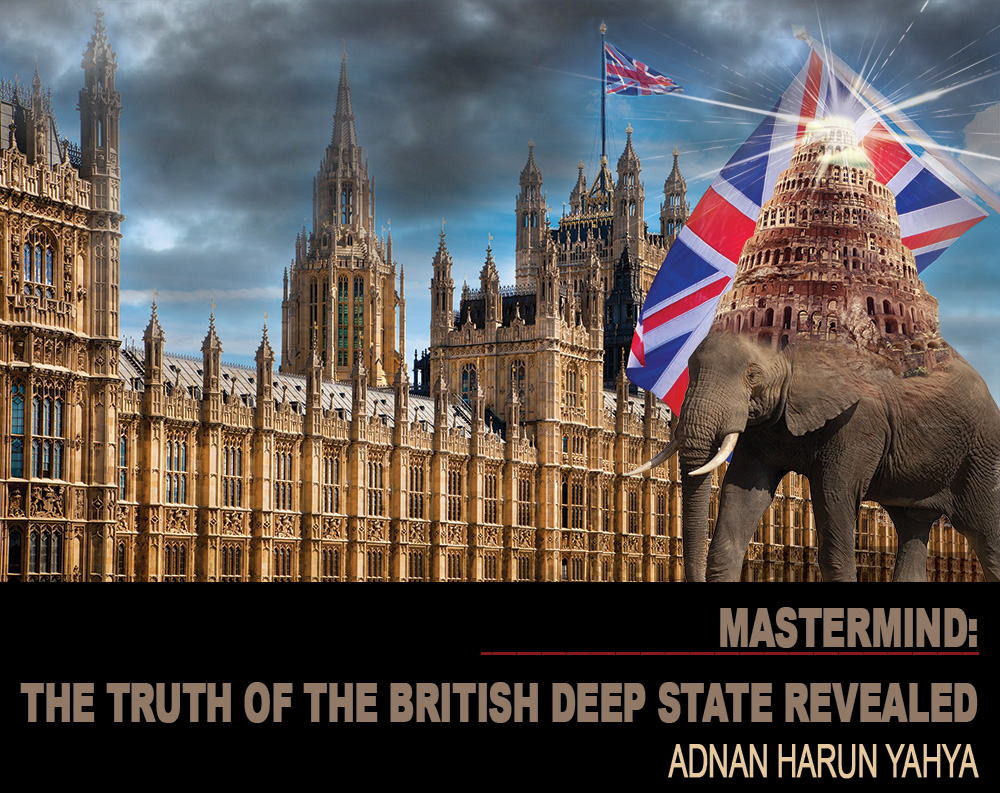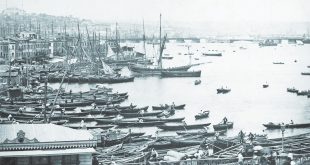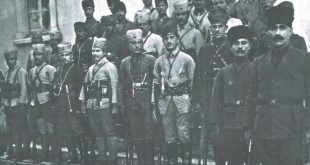The first book ever written by the British deep state on their plans regarding the Ottoman and Turkish lands was William Ewart Gladstone’s Bulgarian Horrors and the Question of the East, published on September 5, 1876. This book was particularly important because its author had served as the Prime Minister of the United Kingdom four separate times, for a period of 15 years in total. That wasn’t Gladstone’s only notable position though. He also acted as a member of the Privy Council -one of the key institutions under the influence of the British deep state operating as a body of advisers to the Queen- and spent 57 years in that position. Lord Curzon, Lloyd George and Horace Rumbold, about whom more will be told in the following chapters, were also members of this Council. In his notorious 64-page book, Gladstone laid out his plan to break the Ottoman Empire into pieces and presented his plan with the pretense of examining “the Question of the East”.
In his book, Gladstone provided secret tactics to disintegrate empires from within. Indeed, shortly after the book was published, British politicians developed a sudden fondness for the minorities living under Ottoman rule. Supporting those with independence ambitions, they provoked the minorities against the Ottoman rule. Gladstone sided with the Bulgarians, Lloyd George with the Greeks and the Armenians, Lord Curzon with the Kurds and Winston Churchill sided with the Arabs. It should be noted that there is nothing wrong with politicians and leaders forming friendly relations with ethnical groups. On the contrary, this forms a desirable picture. Regrettably, however, these new friendships were not real and were only intended to further British interests and break apart the Ottoman Empire. Unsurprisingly, as soon as British interests ceased to exist, so did those so-called friendships.
Gladstone’s book was the epitome of black propaganda (the honorable Turkish Nation is above all the ill-natured remarks made by Gladstone). In this book, he referred to Turks as ‘the one great anti-human specimen of humanity’ and hoped that they would clear out from the lands they ruled. Gladstone didn’t refrain from defaming Turks and said, ‘No Government ever has so sinned; none has so proved itself so incorrigible in sin, or which is the same, so impotent in reformation’.292 The only reason behind all this defamation and slander was that Gladstone was one of the most powerful names in the British deep state, which wished to dismember the Ottoman Empire completely.
 |
The Deep Plan that Began with the Battle of Gallipoli
The British deep state considered the Gallipoli campaign as the final stage of its plan to break apart the Ottoman Empire. However, the battle that took place in Gallipoli went down in history as an epic example of true heroism. The army of the Ottoman Empire, which the Europeans dismissed as ‘the sick man’, bravely defended the Gallipoli Strait at the expense of their lives, despite the full-fledged attack of the Allied Powers. As a result, the Allied Forces, which consisted of Anzacs, British, North Africans, Indians and French, had to retreat amid a humiliating defeat. This incredible military feat forced the British deep state to postpone its plans for the dismemberment of the Ottoman Empire until 1918, when the Armistice of Mudros was signed.
 |
| British and Anzacs at the Gallipoli peninsula. These troops, who dug trenches to gain a foothold on shores, weren’t allowed to pass through. (1915) |
This military success was particularly important because only four years previously, the armies of the Balkan states, which were previously the Ottoman Empire’s, had heavily defeated the Empire. Indeed, had it not been for typhoid fever and the cholera epidemic, the Bulgarian army would have occupied Istanbul. Naturally, the Allied armies were confident that their success would be quick and easy in Gallipoli. However, the Turkish army, by the valor of her 250,000 martyrs, did not open the doors of Gallipoli. Military school students from Istanbul volunteered to join the fight, willingly accepting the prospect of martyrdom. Indeed, in the years 1915 and 1916, the Galatasaray High School didn’t have any graduates because each and every student had been martyred in the battlefield. In 1917, there were only 5 students to graduate.
 |
| British and French battleships were sunk or disabled during the naval operations that took place on March 18, 1915. |
50 students of the Istanbul High School had been martyred in just one battle, which took place on May 19, 1915. Vefa High School and Çapa Teaching School for Boys also didn’t have any graduates during those same years. Balıkesir High School and Balıkesir Teaching School for Boys had only 2 graduates from 1914 to 1918. Students in many schools in Thrace, after previously having their fathers martyred in the Balkan wars, didn’t hesitate to volunteer to fight in the Battle of Gallipoli and become martyrs themselves. Even schools from distant cities such as Sivas, Trabzon, Konya, Erzurum and Kastamonu lost their 1916-1917 graduates as honorable and noble martyrs of Gallipoli. The effects of the loss of this educated generation would be severely felt both during the Turkish War of Independence and the first years of the Republic. Yet, it had been the bravery and the blood of those martyred innocent Turkish youngsters no older than 18 that thwarted the sinister plans of the British deep state. Today, the situation is not very different. Once again, due to the terrorist PKK, we have many martyrs that had been soldiers, officers, police, and teachers. God blessed our country with many martyrs; Anatolia is our homeland because its soil is soaked with the blood of our honorable martyrs.
 |
 |
| Corporal Sayyid, one of the legends of the Battle of Gallipoli |
The Armistice of Mudros that was signed following WWI ended the war for the Ottoman Empire. This Armistice also enabled the British deep state to put its dismemberment plans into motion. Using the clause ‘The Allies to have the right to occupy any strategic points in the event of any situation arising which threatens the security of the Allies’ as a pretense, they started implementing their dismemberment plan, which the British dubbed as the ‘solution to the Question of the East’. The most important target in the plan was the occupation of Istanbul. Not surprisingly, only Istanbul amongst the capitals of the defeated Central Powers was occupied after the WWI. And it was Lord Curzon’s idea.293
 |
| The Turkish army, despite its 250,000 martyrs, fought hard and didn’t open the gates of Dardanelles. |
 |
 |
| The child heroes of the Battle of Gallipoli showed the whole world what it meant to be a Turk. The Galatasaray High School didn’t have a single graduate in 1915 and 1916 because they were all marytred on the battlefield. |
Istanbul’s Occupation Would Mean Achievement of Multiple Goals for the British Deep State
Turkish bravery during the Battle of Gallipoli completely humiliated the British deep state in the international arena. They were convinced that if they occupied the capital of the Islamic world, they would have taken their revenge. The truth is, all the politicians involved in the planning, declaration and implementation of the Gallipoli campaign, were following the orders of the British deep state and naturally, after the defeat, they fell from grace with the public. They hoped that the occupation would gain them their lost influence and power. This had been their main goal.
Istanbul was not only the capital of the Ottoman Empire, but also the capital of the Islamic world. It was a city where the Caliph of the Muslims lived. To the British deep state, an occupied capital would be a tour de force of British prowess, especially in terms of influencing the Muslims living under British rule, most notably in India. They hoped that the occupation would stem any potential anti-British sentiment or independence movements, as well as preventing Muslims from uniting under a single flag, and that British rule would be further cemented.
The decision to occupy Istanbul involved the control of two straits, the Bosphorus and the Dardanelles. The British navy anchored in the Bosphorus Strait supervised exits from Marmara, and the Dardanelles Strait was also kept under the control of the British. In other words, the British had the control of the entrance and the exit to the Marmara Sea, and consequently to the Black Sea. Thus, they could keep the Russian warships under control and impose taxes on Russian trade. This meant having the upper hand of the newly established Bolshevik Russia. St. Petersburg, or Leningrad as it was known during Soviet times, was the only Russian port close to Europe. It was frozen for 6 months of the year and lacked the geographical or strategic infrastructure wanted by the Russian navy. The Russians always wanted to have access to warmer waters. Although the Black Sea was under Russian control, any state that controlled the Straits could easily override that control. The British, through the occupation of Istanbul and the Straits, also wanted to keep post-revolution Russia under control.
The British deep state was anxiously watching the growing affinity between the Bolsheviks and the Turkish independence movement. They feared the Russians could get stronger again and pursue an imperialist policy and believed that if it could control the Straits and Istanbul, it would be able to prevent such an expansion.
 |
| 1. The Allied Navy in the Bosphorus and a French plane inspecting the city
2. The British Navy in the Bosphorus during the occupation of Istanbul |
Another objective of the British occupation of Istanbul was undermining the authority of the Caliph over British colonies to give the impression that British rule had now taken the place of the Sultan; the Caliph and the entire Ottoman Empire was now under British control. The British hoped they could dishearten the Muslim subjects and intimidate the regional tribal leaders, religious leaders and minority leaders. They wanted to give a clear message to everyone that there is no coming back for the Ottoman Empire. The occupation marked the peak of the British Empire. Through occupation, they wished to suppress the Islamic awakening and find new prospective colonies.
The most important symbolic message of the Istanbul occupation was the removal of the Turks from Europe, whereby the Ottoman Empire would no longer be considered a part of Europe. Istanbul had always been the ‘Eastern Capital’ of Europe. Ancient Greeks, Venetians, Romans, Genoese and Byzantines had chosen this beautiful city as their home. The 600-year Ottoman rule in Istanbul made the Ottoman Empire European. An occupation would, therefore, mean the removal of the Turks from Europe.
The British public considered the Ottoman alliance with Germany in WWI as a betrayal and wanted this ‘betrayal’ to be punished. However, as reviewed in the previous pages, this alliance was somehow forced by the British deep state, but various circles voiced that this so-called betrayal should not be left unpunished. The British deep state was convinced that the occupation of Istanbul would give the Ottoman Empire the harshest punishment and would make the Turks pay the heavy price of betrayal. Indeed, many believed that Istanbul being taken from the Turks would be the surest sign of their defeat and the Islamic world would stop viewing the Turks as the ‘victorious soldiers of Islam’. According to the British deep state, this occupation had to be extremely humiliating and conclusive so that everyone would be convinced that the Turks were irreversibly defeated. The British deep state believed that this was essential for the purposes of its domination policy, yet another display of its twisted mentality regarding the Ottoman Empire.
However, the British plans wouldn’t work because they didn’t take Anatolian people into account. The Anatolian independence movement led by Mustafa Kemal and his colleagues reminded the whole world once again why the Turks were considered the victorious soldiers of Islam. Over the next three years, the victors of the WWI completely retreated from Ottoman lands, having suffered a humiliating defeat. French, Italians, Greeks and British, one by one, conceded defeat, signed peace treaties and sent their troops back home.
 |
| (1) March of the Allied forces on Harbiye-Şişli road in Istanbul (2 and 3) British soldiers parading in Beyoğlu (4) Allied forces on Istiklal Street, Istanbul |
Footnotes:
292. W.E. Gladstone, Bulgarian Horrors and the Question of the East, New York and Montreal, Lovell, Adam, Wesson and Company, 1876, p. 39
293. Ş. Can Erdem, “İtilaf Devletlerinin İstanbul’u Resmen İşgali ve Faaliyetleri” [Allied Powers’ Official Occupation of Istanbul and Their Activities], Atatürk Araştırma Merkezi (ATAM), http://www.atam.gov.tr/dergi/sayi-62/itilaf-devletlerinin-istanbulu-resmen-isgali-ve-faaliyetleri
 British Deep State MASTERMIND: THE TRUTH OF THE BRITISH DEEP STATE REVEALED
British Deep State MASTERMIND: THE TRUTH OF THE BRITISH DEEP STATE REVEALED



